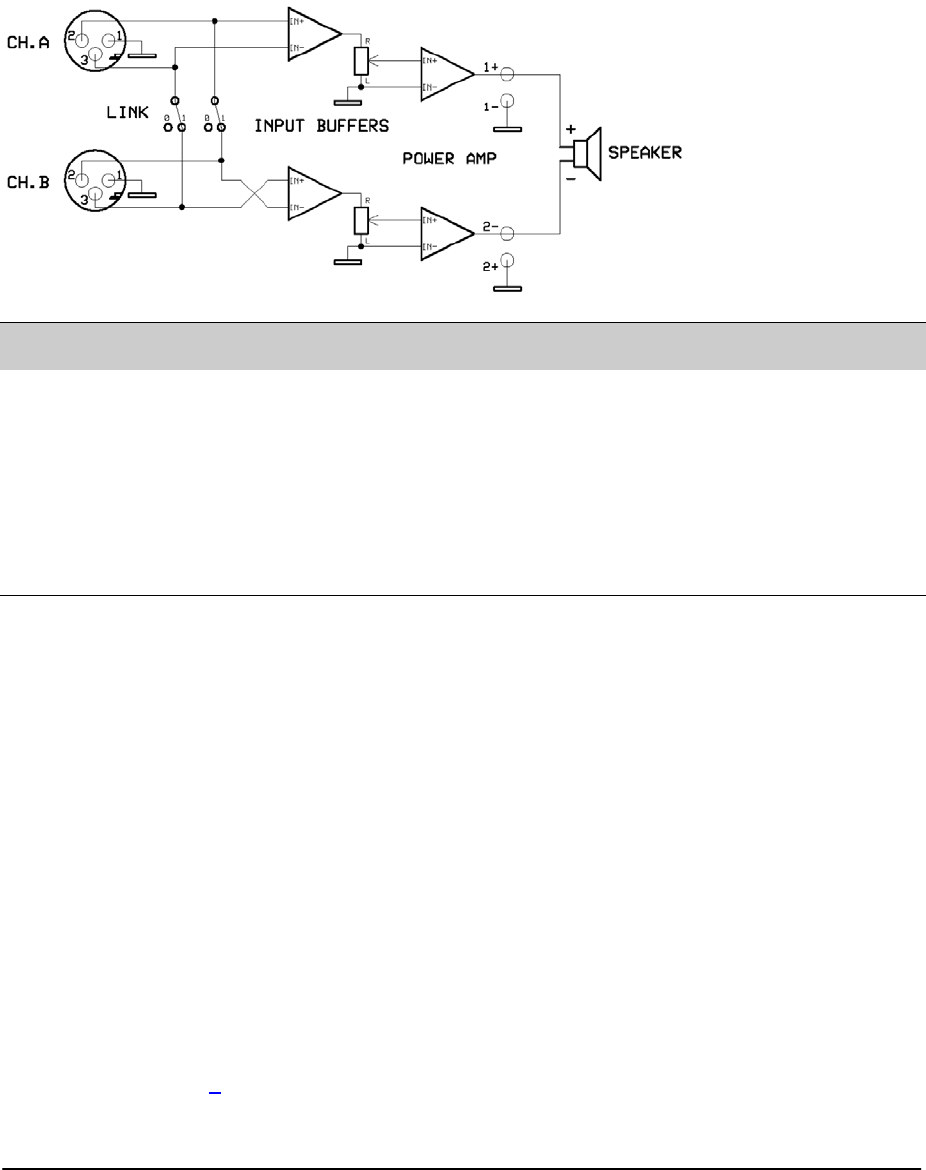
5.3.5 Bridge mono mode features
Bridged mono mode combines the power of both channels into one speaker. This results in twice
the voltage swing, four times the peak power and just less than three times the full power of a
single channel.
One way to understand the load and power from the amplifier’s perspective in bridged mode is that
it is zero voltage at the center of the voice-coil winding. This is because the coil is driven with
positive voltage at one pole and an equivalent negative voltage at the other pole. So, if an 8 ohms
load is connected in bridged mode, one channel shares one 4 ohms part of the load, and the other
channel shares the other 4 ohms part. The power into 4 ohms from an TA 1200 is 700W. So, the
total bridged power into the 8 ohms load will be 2 x 700 = 1400W
6 INSTALLATION
6.1 Mounting
The amplifier is two rack units high (2U) and will mount in a standard EIA 19” rack. Amplifiers may
be stacked directly on top of each other. There is no need for spacing between units. If it is the
intention to fill a rack with amplifiers, we recommend racking is started from the bottom of the rack.
It is also recommended that rear supports are used for amplifiers mounted in the middle of the
rack, especially if used as part of a portable system.
6.2 Cooling
Your amplifier uses a forced air cooling system to maintain a low and even operating temperature.
All fan cooled Tannoy amplifiers have front to rear airflow. There are several reasons for this, one
being that there is usually cooler air outside the rack than inside, and therefore the amplifiers can
run at higher continuous power levels without thermal problems. Never try to reverse the airflow, as
the Intercooler® needs a pressure chamber between the fans and heat sink, and this only works in
one direction of the airflow.
Should a heat sink get too hot, its sensing circuit will mute the hot channel. If the power supply
overheats, another sensing circuit will mute all output channels, until it cools down to a safe
operating temperature.
Make sure that there is an adequate air supply in front of the amplifier, and that the rear of the
amplifier has sufficient space to allow the exhaust to escape. If the amplifier is rack-mounted, do
not use covers or doors on the front or rear of the rack.
For installations with a central cooling system, usually found in fixed installations with a dedicated
rack room, it may be necessary to calculate the maximum heat emission. Refer to Power
consumption on page 9
.
Tannoy Limited
TA 1400 User Manual 11-06-02
8


















